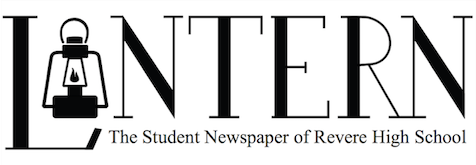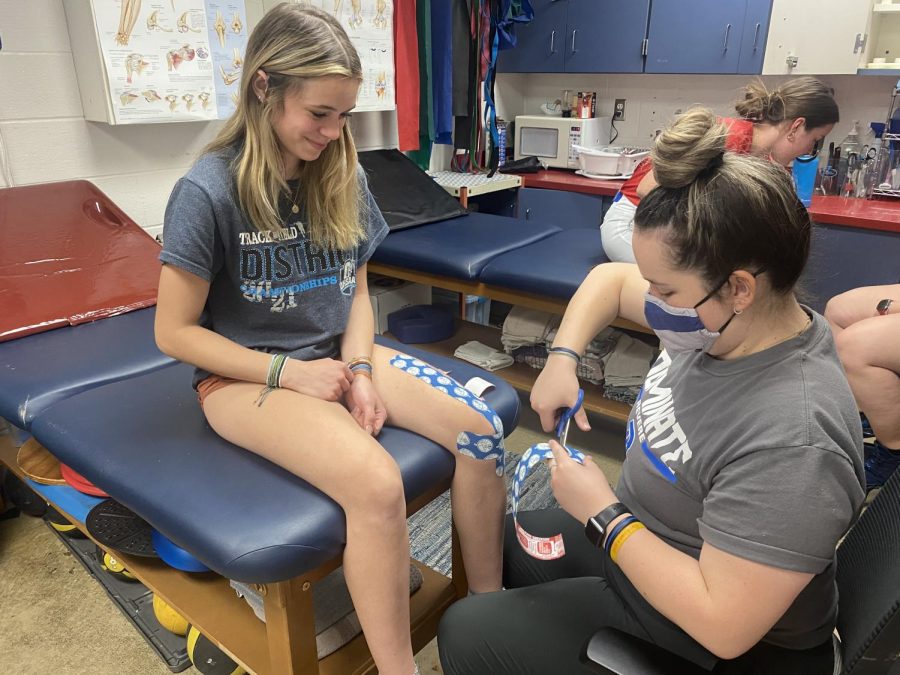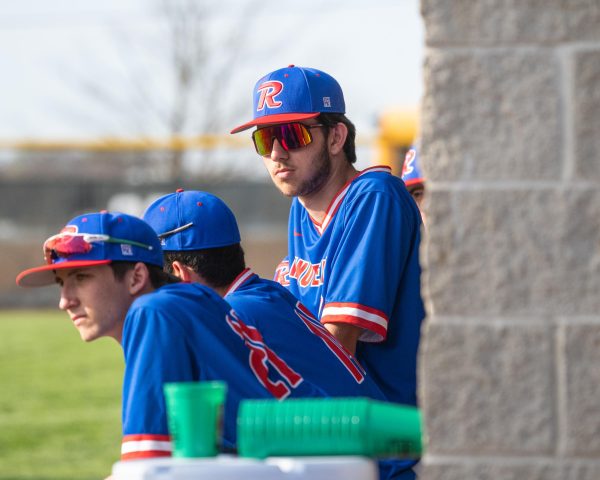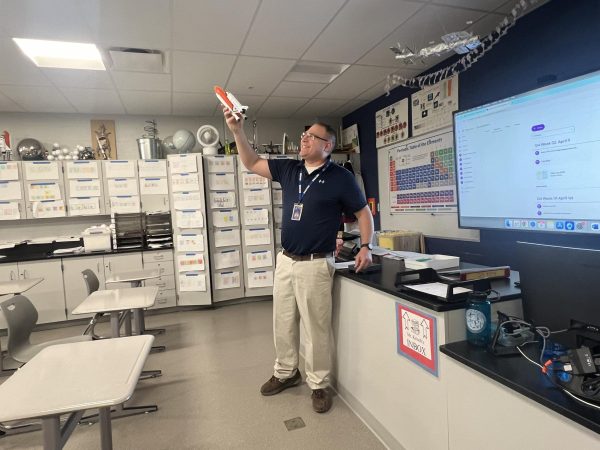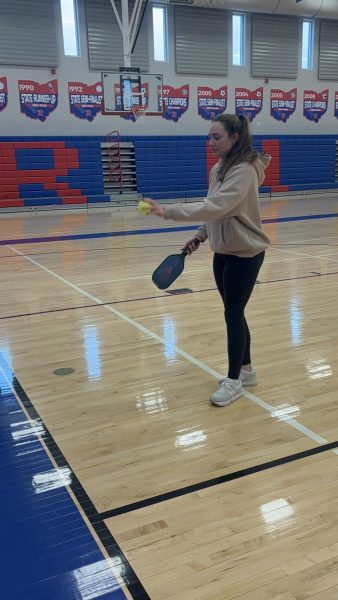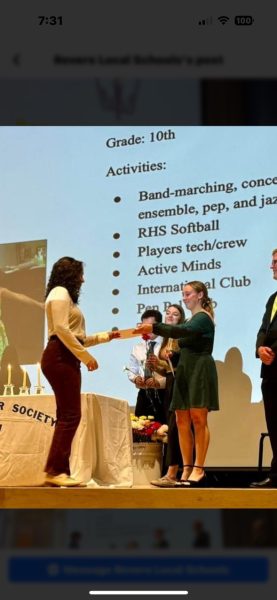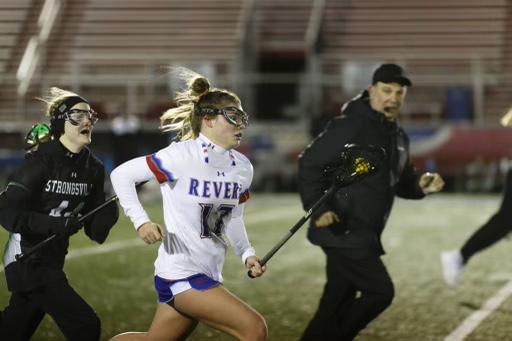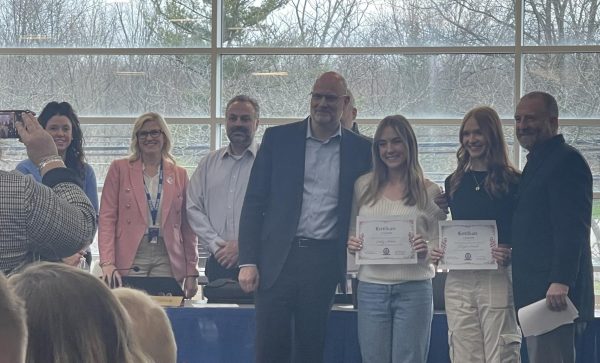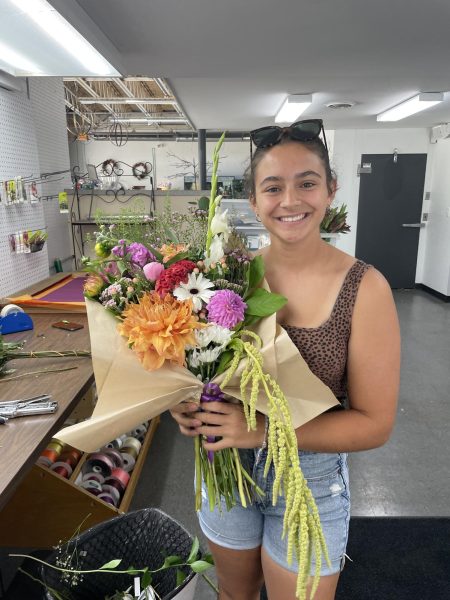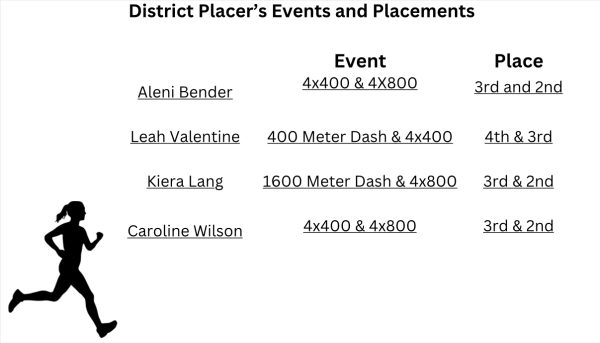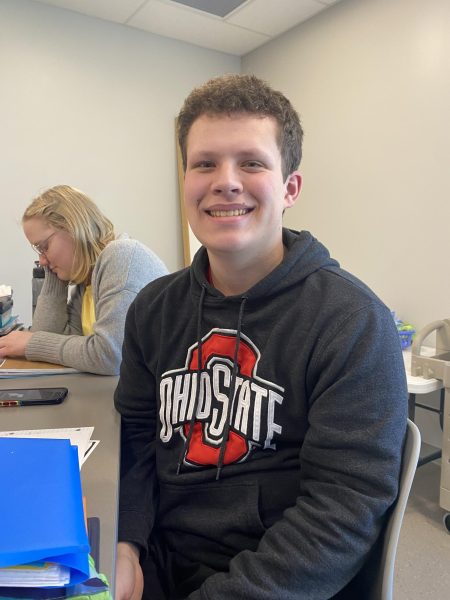Athletic trainers help during the spring season
The school bell rings and students rush to their lockers and out the doors to their cars or to the field to warm up for practice or a game. Student athlete Liv Kapitan’s first stop after school along with many other athletes is the building right off of the track, the field house. She drops off her things in the field house and begins on exercises that she was assigned for her knee and shin injuries. The athletic trainers Lauri Kelly and Hannah Abbott crack jokes and tell stories about daily events. After a few minutes, Kapitan gets her shins and ankles taped by Abbott to help prevent further injury and help the pain. Although being injured is not ideal as a track runner, Kapitan gets the help she needs and can continue to practice thanks to the athletic trainers, Kelly and Abbottt.
Kelly has been a certified athletic trainer since 2009 and has worked at Revere for four years, while this is Abbott’s first year as an athletic trainer and at Revere. The trainers’ schedule varies daily with different sports, games and practices to cover. Their work day usually begins around one pm before student athletes get out of school. Kelly explained what goes on before athletes arrive.
“Before everybody comes in, typically we get here [and] fold and do laundry. We fill coolers for games, spend a little time checking in with Mr. Seeker making sure everything’s ready to go for the day, finish any notes we had from the day before. . . by the time we get that done, [students] are coming out,” Kelly said.
Their day really starts to pick up once the school bell rings and athletes begin to pile in for daily wraps, ice, heating pads or anything else they may need assistance with before a normal practice or a game. Abbott explained what it looks like.
“On a normal day, we get everyone in that’s getting ready for practice, that’s usually the first priority, and then when games start rolling around and people start rolling in, we’ll see that we get busier, so we’ll take care of them,” Abbott said.
When a game pops up, both trainers will go and watch in case they are needed, unless there is still more work to do in the trainers’ room. If that’s the case, one of them will stay back until everything is covered. Kelly and Abbott both played sports in high school and enjoy going to the games and seeing athletes they helped get through the recovery process and get back on the field. Kelly explained the feeling of seeing an athlete return after a hard injury.
“I think my favorite part is watching an athlete that we’ve gone through the injury process with get back on the field and succeed when they’re doing their sport, then they get back and they score a goal, it’s kind of a big deal and it’s really fun to see them through the whole process,” Kelly said.
Another huge aspect in the trainers’ lives is the community gained with the athletes. When an athlete walks into the trainers room, laughter fills the space and other athletes are having fun even in a difficult situation. The trainers make the environment a welcoming place to help anyone that probably does not want to be there and would rather be playing in a game or practice. Junior Kapitan runs for the Varsity track and field team and spends time in the trainer before every practice for help with her shins and knees. Kapitan further explains the welcoming environment the trainers offer.
“You get a good sense of community. Normally I hate going to the doctors, I hate going to the nurse, but it’s different here because they’re more open to people than the school nurse or doctor is. They’re a lot more chill and very welcoming,” Kapitan said.
There are a ton of different types of athletic trainers from law enforcement and military trainers to athletic trainers working at Disney World. Both Kelly and Abbott decided to become high school athletic trainers because of their experience in high school and how they could combine helping people with sports. Kelly explained why she chose high school.
“High school appealed to me because I like the level of students that are here. It’s not as much pressure like you would have at a college on the athletes; it’s a more fun environment; it’s a little more relaxed for your athletes; it’s generally a fun space to be in,” Kelly said.
Abbott also chose high school to train but was originally on the path to be a college athletic trainer. She explained why she switched and eventually ended up at Revere.
“When I was in the program I [said], ‘I’m going to do college,’ and once I did my high school rotation I [said], ‘oh, this is kind of nice,’ because it’s kind of that in between where I didn’t really want to go to the clinic and see different people every day, whereas here you can build relationships with everyone and see all the way through, and you get to work with them day to day; you’re not just seeing them once a week for an hour,” Abbott said.
With being an athletic trainer, Kelly and Abbott’s schedules are always changing as seasons progress and different sports begin and end. Both emphasized that spring is the busiest season of the year because of the multitude of sports and the late games and practices. Although their schedules are packed after 1 pm during the school year, unlike a teacher, Kelly and Abbott work through the summer as well. Kelly explained what summer usually looks like for an athletic trainer.
“We’re here pretty much all day throughout the summer depending on who’s here, but we cover everyone’s sculpt lifting. We also do team yoga with a lot of the teams, we cover open fields for whoever’s coming over for open fields or open gyms and the really fun part about summer is that we get to help with our youth camps which is very exciting,” Kelly said.
The two trainers will continue to work through the spring season and continue to get athletes back on the field after an injury, and for any new help an athlete may need, the trainer’s door is always open.
